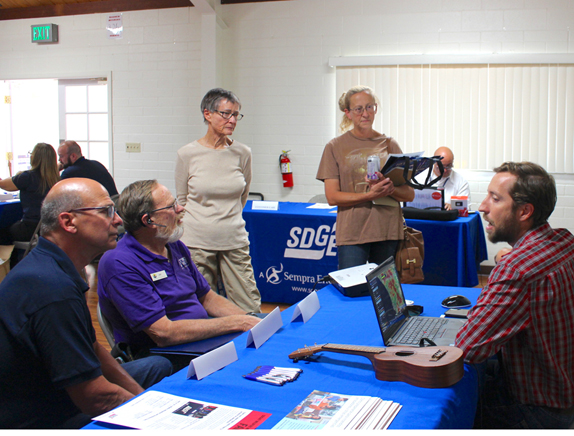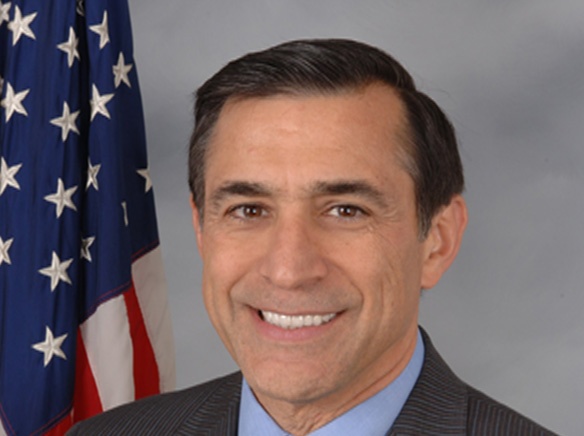
Brian D’Agostino is a meteorologist with San Diego Gas and Electric who spoke at the recent Wildfire Mitigation and Resiliency open house held at the Pine Valley Community Center. In addition to the Fire Science and Climate Adaptation department table that D’Agostino manned alongside Steve Vanderberg, the event included community outreach efforts from several unique SDGE departments.
The event is part of a series on information related to planned power shutoffs and was organized by SDGE employee and local resident Robyn Herrick.
“I put together these presentations based on what the community tells us they want to know. We are impacted out here and as a company we have to do our due diligence to collaborate with all the different agencies,” Herrick said.
According to D’Agostino, SDGE began working in 2009 to establish weather stations for monitoring winds and now have 170 such stations all over San Diego. He said that the fire behavior modeling software that their Fire Science and Climate Adaptation department created has being recognized for its data collection capabilities by scientists at University of California, Los Angeles and is used to classify the likelihood of wildfires in different communities.
When attendee Mary Rajknecht asked why all of Pine Valley has not had its electrical lines buried underground, D’Agostino explained how roadways and property lines can alter the potential path of buried lines so that what appears to require three miles of coverage on visible lines can end up requiring five miles worth of infrastructure if they were to be moved underground.
In contrast to the scientific data that was explained to the public at D’Agostino and Vanderberg’s table, Dan Bohnett described the role of Tree Safety as Whackers Extraordinaire, then laughed and took a more serious turn in saying that in actuality, they try to ensure that residents have the right tree in the right place.
“People do sometimes question why we go out and trim back trees but it is a known ignition source so we really have to keep all that vegetation trimmed. In this area, it is really important that the electrical infrastructure doesn’t start a fire with so much natural fuel to burn,” Bohnett said.
Land Management Representative Troy Goodenough spoke about how it can be challenging to go out into the community and explain to residents that SDGE has certain land rights, generally in the form of easements, and once they have permission to access that land and work to eliminate fire hazards it is usually for perpetuity.
Although the message from every department at the event was on how the public can boost wildfire resiliency, the reality is that SDGE will occasionally cut off power. Residents are able to track planned and unplanned power outages on the SDGE website.
Public Affairs Manager Joe Gabaldon walked around the event, introducing himself residents, and explained that in addition to the power outage map available on their website, they now have a link to that same in¬formation available on the county-maintained Ready San Diego website. Gabaldon pulled out his phone and pulled up the mobile application to illustrate that it can be accessed by residents who are seeking emergency re¬sources if their power is turned off for wildfire prevention.
Along the same lines, Customer Outreach and Energy Solution Advisor Arnie Garcia informed attendees that there are non-emergency resources available to residents as the temperatures heat up.
“I want to let people know about Cool Zones— they’re public and private entities that can be found on an interactive map, marked by polar bears, and located throughout our service territory,” Garcia said.













